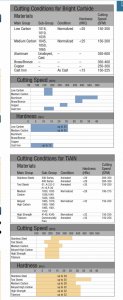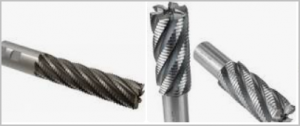I just broke a pricey 1/2" carbide end mill making a vise stop. I didn't think I was doing anything wrong, and the mill was not complaining, but I'd rather not do that again anytime soon.
Thankfully, the part is not ruined. I can remove the damaged section by milling the jaw clearance step at that location.
So this begs my question:
Say you are squaring up and sizing some common cold rolled steel (bar, plate, etc), what is your goto end mill size and type for general milling?
How fast do you turn it?
What feed rate do you use? Since I don't have a power feed, just a general comment here would do. Eg, very slowly or just below complaint, slowly enough so it purrs, fast enough so it buzzes, etc.
How deep are your standard cuts?
(20 thou at a crack, 30 thou, 50 thou, as deep as I need but temper my feed rate to match the depth, etc
How much of the diameter of the mill bit do you use per pass? (3/4, 1/2, 1/3, 1/4, etc).
Any and all advice and other info will be appreciated and absorbed like a hungry sponge.
Thankfully, the part is not ruined. I can remove the damaged section by milling the jaw clearance step at that location.
So this begs my question:
Say you are squaring up and sizing some common cold rolled steel (bar, plate, etc), what is your goto end mill size and type for general milling?
How fast do you turn it?
What feed rate do you use? Since I don't have a power feed, just a general comment here would do. Eg, very slowly or just below complaint, slowly enough so it purrs, fast enough so it buzzes, etc.
How deep are your standard cuts?
(20 thou at a crack, 30 thou, 50 thou, as deep as I need but temper my feed rate to match the depth, etc
How much of the diameter of the mill bit do you use per pass? (3/4, 1/2, 1/3, 1/4, etc).
Any and all advice and other info will be appreciated and absorbed like a hungry sponge.


